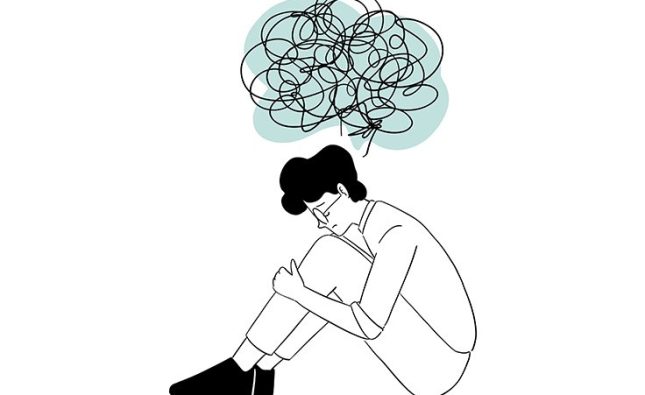
Introduction
Maintaining optimal eye health goes beyond routine eye tests; it involves recognizing subtle changes and understanding when to seek urgent attention. While regular eye check-ups are recommended every two years by the NHS for those without apparent symptoms, certain signs demand immediate consideration from eye specialists.
Early Warning Signs: A Closer Look
1. Finding it Harder to Read
As we age, the eyes undergo natural changes, and one common shift is presbyopia. Individuals aged 40 and over might notice difficulties reading up close, indicating a need for reading glasses. If this gradual change becomes apparent, it’s crucial to consult an optician.
-
- Presbyopia: Natural change in focusing ability.
- Reading difficulties: A common symptom.
- Optician consultation: Essential for appropriate prescriptions.

2. Blurred Vision
Sudden blurry vision can be alarming, but assessing the circumstances is crucial. Robert Longhurst, Consultant Optometrist at Phoenix Hospital, Harley Street, advises asking specific questions about the nature of the blurriness. Gradual blurring could be linked to dry eyes or developing cataracts, while sudden onset may signal serious issues like a detached retina or a stroke.
-
- Nature of blurriness: Gradual or sudden onset.
- Possible causes: Dry eyes, cataracts, or serious issues.
- Urgent medical attention: Required for sudden blurring.

3. Sudden Loss of Vision
Temporary vision loss, even if it resolves quickly, is a concerning symptom. Amaurosis fugax, a temporary loss of vision due to reduced blood flow to the retina, could be a precursor to a stroke. Seeking urgent medical advice is imperative in such cases.
-
- Amaurosis fugax: Temporary loss of vision.
- Reduced blood flow: Potential precursor to a stroke.
- Urgent medical advice: Necessary even if vision returns.

4. Visual Disturbances
Visual disturbances can vary from seeing straight lines as wavy to experiencing floaters. While floaters are often benign, a sudden increase accompanied by flashing lights may indicate a posterior vitreous detachment. Seeking professional attention is essential to rule out potential complications.
-
- Types of visual disturbances: Wavy lines, floaters, etc.
- Sudden increase in floaters: Requires attention.
- Posterior vitreous detachment: Potential complications.
Red Eyes: Causes and Concerns
Reddening of the Eyes
Red eyes, a common occurrence, can result from various factors such as irritation or infection. Seasonal considerations like hay fever may contribute, and over-the-counter antihistamine eye drops can help alleviate symptoms.
-
- Red eyes causes: Irritation, infection, or allergies.
- Seasonal considerations: Hay fever and eye redness.
- Antihistamine eye drops: Useful for relief.

Blepharitis
Often presenting with symptoms similar to conjunctivitis, blepharitis involves inflammation of the eyelid edges. Flakes, itching, and crusting may occur, and regular ‘lid hygiene’ is recommended for management.
-
- Blepharitis: Inflammation of eyelid edges.
- Symptoms: Flakes, itching, and crusting.
- Lid hygiene: Management approach.
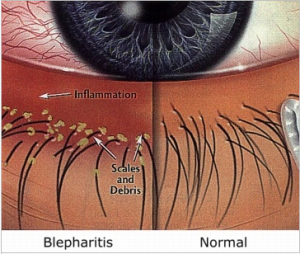
Hay fever
During spring and summer months, many people suffer from hay fever, which can cause eye irritation and redness. If you have hay fever and experience this symptom, you may find eye drops containing antihistamine help to reduce redness and itching.
Conjunctivitis
Allergic or infective conjunctivitis is one of the most common causes of red or pink eye. “This is a common eye inflammation usually caused by an irritant or a bacterium or virus,”
This condition is often infectious, so you may need to take time off work or study. If you experience symptoms alongside the redness that include itching, watery eyes, or pus, it’s likely that conjunctivitis is the cause. This condition can often be treated at home, using sterile (boiled and cooled) water and cotton wool to clean the eye area.
However, it may require additional medication. Your pharmacist can provide the same medication you would get on prescription from a GP, and can also confirm if any further action is needed.
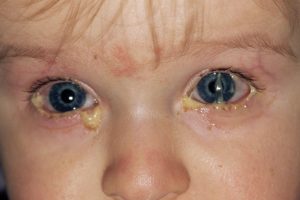
Subconjunctival Haemorrhage
Despite its alarming name, subconjunctival haemorrhage is generally not serious and resembles a bruise on the eye. It can be caused by various factors, including injury, coughing, sneezing, or, rarely, high blood pressure.
-
- Subconjunctival haemorrhage: Bruise-like appearance.
- Causes: Injury, coughing, sneezing, or high blood pressure.
- Typically not serious: Rarely indicates a severe condition.
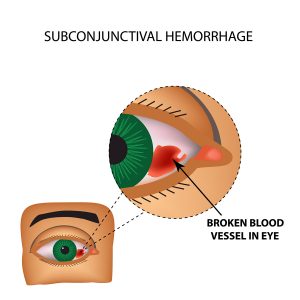
Other Causes of Red Eyes
Light sensitivity accompanying red eyes may signal uveitis, an inflammation of the middle layer of the eye. It’s crucial to seek medical advice for this combination of symptoms, as treatment with steroids may be necessary.
-
- Light sensitivity: Possible symptom of uveitis.
- Inflammation of middle layer: Uveitis.
- Medical advice: Essential for proper diagnosis and treatment.
Contact lens wearers
In addition, if you are a contact lens wearer, this can make you more susceptible to certain infections. If you experience any of the above symptoms, remove your contact lens and speak to your optician or pharmacist.
“Although for the most part, a red eye does not have a sinister cause, anyone with red eye should get it looked at,” advises Longhurst. “Opticians are trained to diagnose most causes of a red eye and some can even prescribe medication.” If you are unable to see an optician, ask your pharmacist for advice.
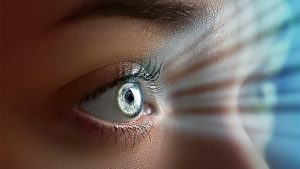
Eye Pain: Deciphering the Signals
Eye soreness or pain, while often not serious, should be evaluated by an optician. Severe pain, especially with visual changes or sensitivity to light, requires immediate medical attention.
-
- Eye pain assessment: Evaluation by an optician.
- Severe pain and visual changes: Immediate medical attention.
- Not always serious: Often linked to issues like dry eyes or foreign bodies.
Conclusion
Understanding when to worry about your eyes involves recognizing changes in vision, addressing red eye symptoms promptly, and seeking professional advice for eye pain. Regular eye check-ups remain crucial, but vigilance towards alarming symptoms ensures early intervention and optimal eye health. Remember, your eyes are precious, and timely attention can make a significant difference in preserving your vision.










